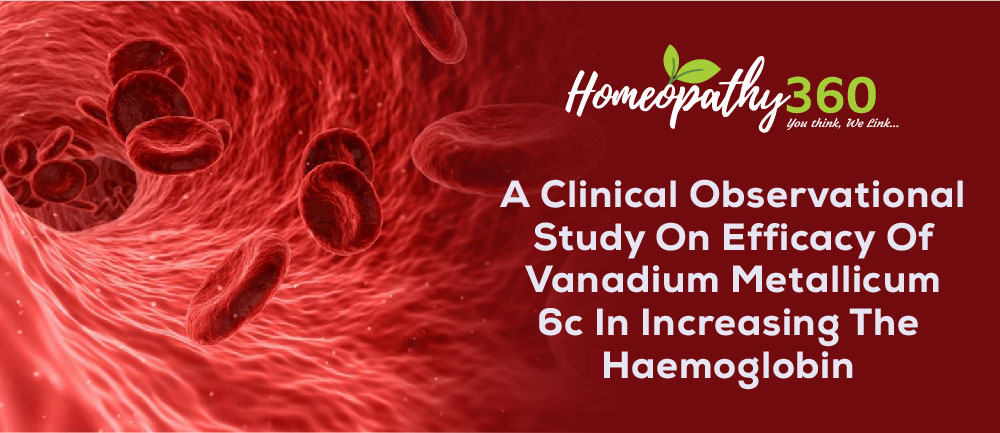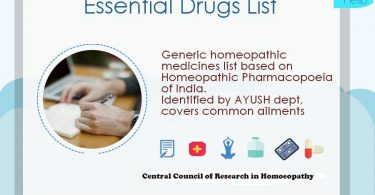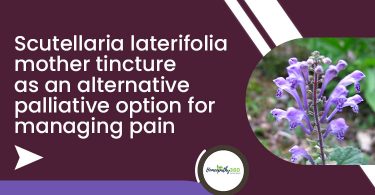
Abstract:
Objective: A study to assess the efficacy of Sangunaria nitrica 30 in acute rhinitis using rhinitis control assessment test scale
Material and methods: A prospective observational study was conducted on 29 cases of acute rhinitis, attending to OPD and peripheral centers of Father Muller Homoeopathic Medical College Hospital, Mangalore. Diagnosis was based on the clinical presentation; patients were prescribed a single dose of Sangunaria nitrica 30 depending upon the symptom similarity. Rhinitis control assessment test scale was used for statistical analysis.
Result: The study showed that males are most commonly affected. And the most common age group affected was 18 – 27. The values of rhinitis control assessment test scale were compared before and after the treatment with Sangunaria nitrica 30. Statistical analysis showed they were highly significant, with the ‘p’ value being less than 0.0001.
Conclusion: This study adequately demonstrates the effectiveness of homoeopathic remedy Sanguinaria nitrica 30, in the treatment of acute rhinitis.
Keywords: homoeopathy, acute rhinitis, rhinitis control assessment test scale, Sangunaria nitrica, paired ‘t’ test.
Abbreviations:
OPD – outpatient department., RCAT – Rhinitis control assessement
test
Background
Acute rhinitis is an acute inflammation of the nasal mucosa, caused due to viral, bacterial, irritant varieties. (1) Acute rhinitis is the most common condition affecting about 10% to 30% of adult and 40% children. Prevalence of the disease is marked in all age groups, especially in children it’s more marked. (3) Viral acute rhinitis which is also known as common cold or coryza caused by adenovirus, picorna virus, coxsackie virus. The infection is usually obtained through airborne droplets. (2) Acute bacterial rhinitis, it’s a non- specific infection, it may be either primary or secondary. Primary bacterial acute rhinitis is seen in the children and is caused due to the pneumococcus, streptococcus, and staphylococcus. Secondary acute bacterial rhinitis is the result of bacterial infection supervening acute viral rhinitis. (1), (4) Irritant bacterial rhinitis occur mainly due exposure to the dust, smoke, polluted environment, irritating gases. (1) Homoeopathy has great scope in treating acute rhinitis. The scope of homoeopathy doesn’t lie in treating the causative agent or its ultimate, but in treating the actual morbid vital process by method of individualisation.
Sangunaria nitrica: Common name: Nitrate of sanguinarine. Formula: (C10H14NO4) NO3. Molecular weight: 394.00
This remedy is proved by Owens. J. H. Clarke in his third volume of A Dictionary of Practical Materia Medica in page 1086 describes Sanguinaria nitrica under NOSE for Nasal Congestion, constant itching of the nose with burning sensation, crust formation in the alae nasae, loss of smell, coryza with chilliness. Lacrimation and headache associated.
Dr William Boericke(5) writes about Sanguinaria nitrica in his Materia Medica as follows –
NOSE – Feels obstructed; profuse, watery mucus with burning pain; enlarged turbinate at beginning of hypertrophic process; secretion scanty, tendency to dryness. Small crusts which bleed when removed. Post nasal secretion adherents to nasopharynx, dislodged with difficulty. Dry and burning nostrils, watering of nose, with pressure over the root of the nose, nostrils plugged with thick, yellow, bloody mucus. Sneezing. Rawness and soreness in posterior nares.
Aim and objective:
To assess the efficacy of Sangunaria nitrica 30 in acute rhinitis using rhinitis control assessment test scale.
Material and methods:
Source of data: This study was conducted on patients of OPD of Fr Muller Homoeopathic Medical College and Hospital, Mangalore.
Period of Study: The study was carried out from November 2018 to April 2019.
Sample size: 29 cases of acute rhinitis were selected as per the set criteria.
Type of study: Prospective observational study, without controls.
Remedy prescribed: Sangunaria nitrica 30 was prescribed to the patients depending upon the symptom similarity. One dose, EMES for a week.
Evaluation of outcome: Rhinitis control assessment test scale was used for statistical analysis.
RHINITIS CONTROL ASSESSMENT TEST SCALE 7
| 1. During past week, do you often have nasal congestion? NEVER RARELY SOMETIMES OFTEN EXTREMELY OFTEN 2. During past week, how often do you sneeze? NEVER RARELY SOMETIMES OFTEN EXTREMELY OFTEN 3. During past week, how often do you have watery of eyes? N NEVER RARELY SOMETIMES OFTEN EXTREMELY OFTEN 4. During past week, to what extent do your nasal or allergy symptoms interfere with your sleep? NEVER RARELY SOMETIMES OFTEN EXTREMELY OFTEN 5. During past week, how often did you avoid any activities (for examples visiting a house with a dog or a cat, gardening) because of your nasal or other allergy symptoms? NEVER RARELY SOMETIMES OFTEN EXTREMELY OFTEN 6. During past week, how well were your nasal or allergy symptoms controlled? NEVER RARELY SOMETIMES OFTEN EXTREMELY OFTEN Scoring: 5 – never 4 – rarely 3 –sometimes 2 –often 1 –extremely often. Maximum score 30. |
Selection Criteria
- Age group 5-60
- Both sexes
- Patients giving consent to participate in study
- All the newly reporting cases of acute rhinitis.
- Already registered patients with new acute complaint that is presenting with the signs and symptoms of acute rhinitis
Exclusion criteria – The cases without proper follow up were excluded
OBSERVATION AND RESULTS
According to the study, age group of 18 – 27 years were commonly affected which is about (34.48%) with 10 cases, followed by age group of 58-67 which has 7 cases (24.13%). 5 cases (17.24%) belonged to 38 -47 age group, 28 – 37 age group presented with 4 cases (13.79%) and 48 – 57 age group with 3 cases (10.34%)
Table 1: Distribution of study subjects based on their age group
| AGE GROUP | NUMBER | PERCENTAGE% |
| 18 -27 | 10 | 34.48% |
| 28 -37 | 4 | 13.79% |
| 38 -47 | 5 | 17.24% |
| 48 -57 | 3 | 10.34% |
| 58 -67 | 7 | 24.13% |
It was also observed that in this study that males were more commonly affected with the disease that is about 51.72% (15 cases) than females, with cases of about 48.27% (14 cases).
Table 2: Distribution of study based on sex
| SEX | NUMBER | PERCENTAGE% |
| MALE | 15 | 51.72% |
| FEMALE | 14 | 48.27% |
TABLE 3 : Rhinitis control assessement test scale before and after treatment
Maximum Score: 30
| Case no | Score – Before | Score – After |
| 1 | 16 | 24 |
| 2 | 19 | 26 |
| 3 | 16 | 25 |
| 4 | 18 | 26 |
| 5 | 18 | 27 |
| 6 | 22 | 26 |
| 7 | 21 | 26 |
| 8 | 16 | 24 |
| 9 | 16 | 18 |
| 10 | 20 | 25 |
| 11 | 14 | 23 |
| 12 | 17 | 25 |
| 13 | 19 | 26 |
| 14 | 17 | 20 |
| 15 | 15 | 24 |
| 16 | 17 | 24 |
| 17 | 15 | 25 |
| 18 | 14 | 25 |
| 19 | 13 | 26 |
| 20 | 10 | 26 |
| 21 | 13 | 24 |
| 22 | 12 | 23 |
| 23 | 14 | 25 |
| 24 | 13 | 26 |
| 25 | 10 | 21 |
| 26 | 15 | 26 |
| 27 | 12 | 24 |
| 28 | 14 | 25 |
| 29 | 15 | 26 |
| SCORE (0-30) | BEFORE | PERCENTAGE% | AFTER | PERCENTAGE% |
| 0 -5 | 0 | 0% | 0% | 0% |
| 6 -10 | 2 | 6.66% | 0 | 0% |
| 11 – 15 | 13 | 43.33% | 0 | 0% |
| 16 – 20 | 12 | 40.00% | 1 | 3.33% |
| 21-25 | 2 | 6.66% | 17 | 56.66% |
| 26 -30 | 0 | 0% | 11 | 36.66% |
A total of 29 cases were taken for the study based on the selection criteria and all are subjected to fill the RCAT scale questionnaire before and after seven days of Sanguinaria nitrica 30 one dose EMES.
Calculation of mean:
| Before | After | |
| Mean value | 15.55 | 24.58 |
Calculation of mean difference: before and after assessment of RCAT scale is 9.03
Statistical Evaluation – Paired ‘t’ Test:
- PAIRS = BEFORE with AFTER ( PAIRED)
- Confidence Interval Level 95% = 1.96
Paired Sample Statistics:
| Pair | Mean | N | Std. Deviation | S.E. Mean |
| Before | 15.55 | 29 | 41.61 | 7.73 |
| After | 24.58 | 29 | 20.69 | 3.84 |
Paired Samples Correlations:
| N | CORRELATION | SIG. | ||
| Pair | BEFORE AND AFTER | 29 | 20.06 | .337 |
Paired Sample Test:
| Pair | Pair Difference | t | df | sig.(2-tailed) | |||
| Before –After | Mean | Std. Deviation | Std. Error Mean | Lower | Upper | ||
| 20.065 | 31.15 | 5.79 | -2.253 | +4.253 | 4.135 | 28 | .000000 |
Conclusion – The calculated ‘p’ value is less than 0.0001. This is considered to be extremely statistically significant.
Result: The study showed that males are most commonly affected. And the most common age group affected was 18 – 27. The values of rhinitis control assessment test scale were compared before and after the treatment, with Sangunaria nitrica 30. Statistical analysis showed they were highly significant, with the ‘p’ value being less than 0.0001.
Conclusion: This study adequately demonstrates the effectiveness of homoeopathic remedy Sanguinaria nitrica 30, in the treatment of acute rhinitis.
References:
- Dhingra P, Dhingra S, Dhingra D. Diseases of ear, nose and throat & head and neck surgery. New Delhi, India: Elsevier; 2014.
- Maran A, Hussain S. Logan Turner’s Diseases of the Nose, Throat and Ear. Boca Raton: CRC Press; 2015.
- Scott-Brown W, Gleeson M. Scott-Brown’s otolaryngology, head and neck surgery. London: Hodder Arnold; 2008.
- Maqbool M, Maqbool S. Textbook of ear, nose and throat diseases. London: J.P.Medical Ltd; 2013.
- Boericke W. Boericke’s new manual of homoeopathic Materia Medica with repertory. New Delhi: B Jain Publishers; 2007.
- Meltzer E O., Schatz M, Nathan R, Garris c, Stanford R H, Kosinski M. Reliability, validity, and responsiveness of the Rhinitis Control Assessment Test in patients with rhinitis. J Allergy Clin Immuno 2013; 131-2:379-386.
- Guyatt GH, Osborn M, Wu AW, Wywrich KW, George JM. Methods to explain the clinical significance of health status measures. Mayo Clin Proc 2002;77:317-83.
About Author:
- Dr Uma Shenbagakumar, Intern, Fr Muller HMC, Mangalore.
- Dr M K Kamath, Dept of Medicine, Fr Muller HMC, Mangalore





